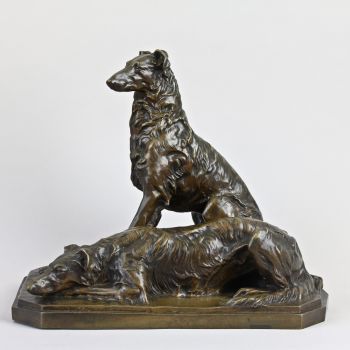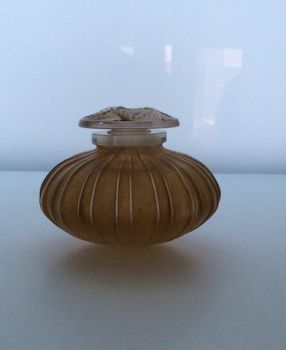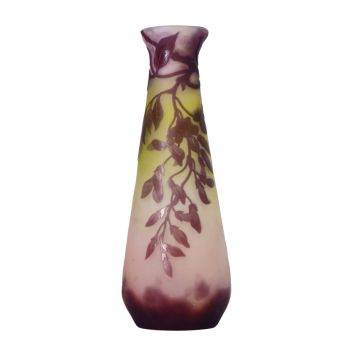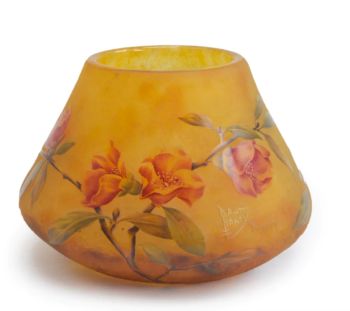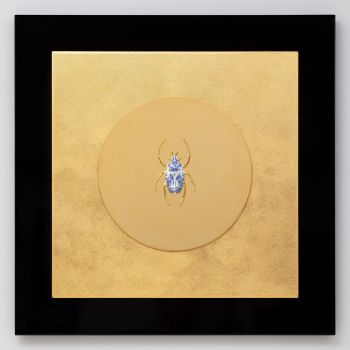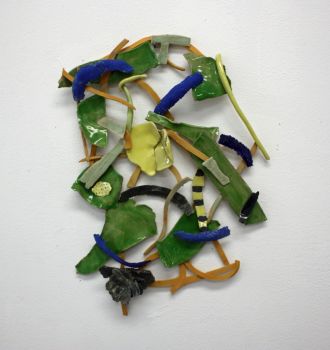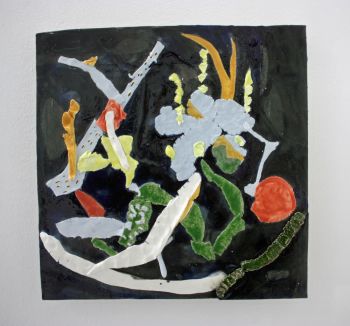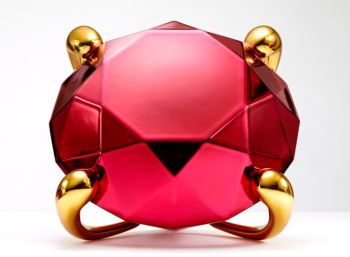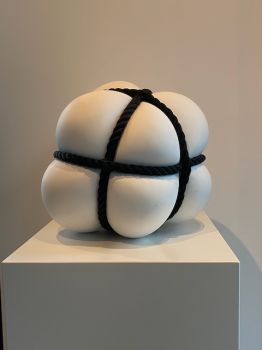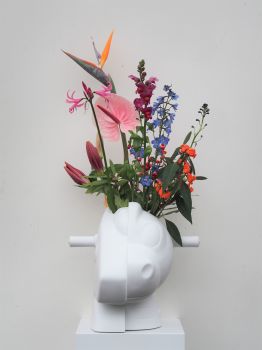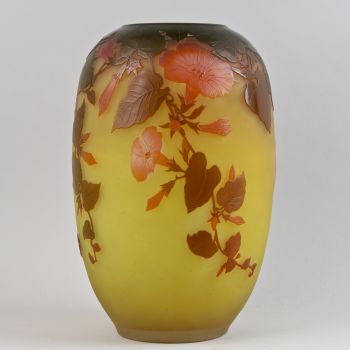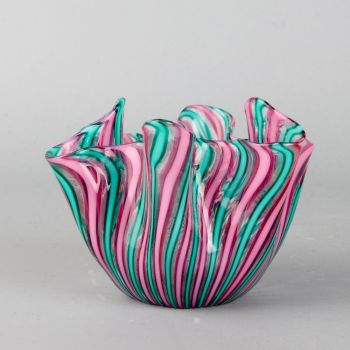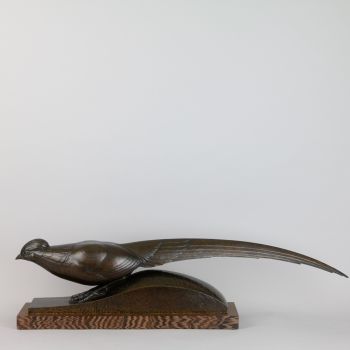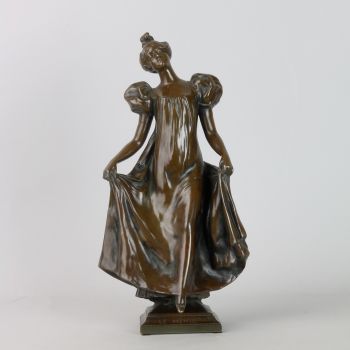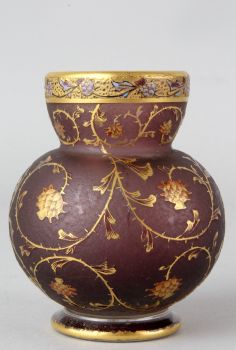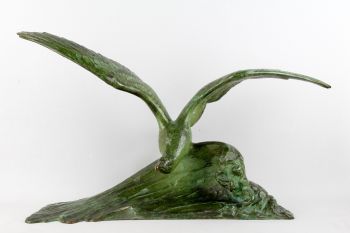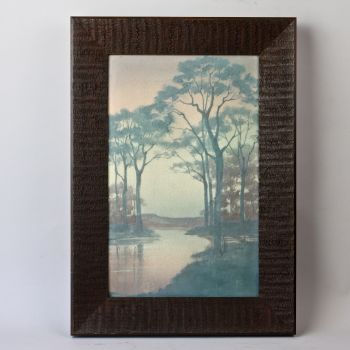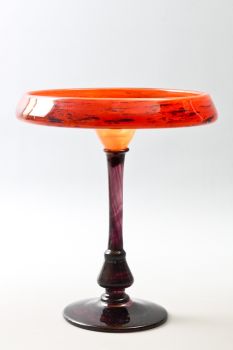Rosenthal, Harald Kreutzberg 1951 - 1954
Waldemar Fritsch
Porcellana
42.50 cm
ConditionMint
€ 7.500
Passage Arts
- A proposito di opere d'arte3 Figurines in white porcelain presenting the German dancer/ choreographer/ actor Harald Kreutzberg,
by the German sculptor Waldemar Fritsch (1909-1978), made for Rosenthal in resp. 1951 en 1954.
Height: 40, cm, 30 cm en 42,5 cm.
Harald Kreutzberg (1902-1968) was the most famous male representative of the German dance in the 20th century and was regarded as the "best dancer since Nijinsky".
From 1923 he appeared at the Hannover opera house as a solo dancer with his own choreography.
In 1926 he toured successfully through the United States with the dancer Yvonne Georgi, where he met in 1934 the dancer Ruth Page with whom he toured through Hawaï, Japan, Shanghai and Wladiwostok.
In 1941 he was appointed to leader of the State Academy for dance in Vienna.
After many triumphs as a dancer and dance teacher all over the world he received in 1952 the German Dance prize for the "life's work of the greatest German dancer since 25 years".
In 1968 Kreutzberg died at the age of 66 in Bern, Switzeland.
Eventually separately for sale. - A proposito di opere artista
Waldemar Fritsch era uno scultore e ceramista di porcellane dei Sudeti-tedesco, che visse e lavorò ad Ansbach
Waldemar Fritsch nasce nel 1909 come decimo ed ultimo figlio ad Altrohlau parte della doppia monarchia austro-ungarica. Dopo essersi diplomato alla Volks und Bürgerschule, Fritsch si è formato come fondatore di utensili e stampi in porcellana nella fabbrica di porcellane "Viktoria" di Altrohlau. L'area intorno a Egerland, Karlovy Vary e Teplitz-Schönau erano considerati importanti siti dell'industria della porcellana e della ceramica. Le scuole tecniche per la formazione tecnica e artistica dei ceramisti esistevano a Karlovy Vary (dal 1925) e Teplitz-Schönau (1875), e nel 1811 la porcellana veniva prodotta ad Altrohlau.Fritsch ha frequentato la Scuola di Belle Arti di Praga dal 1929 e la Porzellanfachschule Karlsbad-Fischern dal 1926. Nelle sue creazioni, ha attirato l'attenzione per la qualità artistica di piccole sculture come il rilievo in terracotta "Jugend", un gattino e un gruppo di galline come così come un wolfshund bugiardo. A Praga ha creato sculture in porcellana di San Sebastiano, un loreley, un cacatua e una donna con un bambino e un bambino.
Nel 1934 Fritsch ricevette un posto di assistente presso la scuola statale per la ceramica di Teplitz-Schönau, che rilevò nell'autunno del 1938. Nel 1939 fu insignito della cattedra di scultura applicata alla Scuola statale dell'industria della porcellana di Karlovy Variare. Dopo aver denunciato i nazisti, Fritsch fu imprigionato a Dresda e Berlino dalla Gestapo nel 1939. Quando fu liberato nel 1940, gli fu proibito di lavorare. Dal 1943 e fino alla fine della guerra, prestò servizio nel servizio di guerra Wehrmacht.
Nel 1946 si trasferì nel sud-ovest della Germania con i suoi genitori di 80 anni, dove trovò una nuova casa ad Ansbach nel 1947 dopo soggiorni temporanei a Stoccarda-Wendlingen ed Ellingen. Dopo il trasferimento ad Ansbach seguì un periodo di grande creatività. Le sue sculture in porcellana erano nel museo di Ansbach, che nel 1963 dedicò una mostra speciale a Fritsch. Morì il 13 luglio 1978 ad Ansbach.
Sei interessato ad acquistare questa opera d'arte?
Artwork details
Related artworks
- 1 - 4 / 6
Artista Sconosciuto
A blue and white Romance of the Three Kingdoms charger, Kangxi period (1661-1722)1661 - 1722
Prezzo su richiestaMenken Works of Art
Artista Sconosciuto
A Chinese porcelain blue and white 'Mantou Xin' bowl, Kangxi period (1661-1722)1700 - 1720
Prezzo su richiestaMenken Works of Art
1 - 4 / 24Samuel Dejong
Anatomia Blue Heritage, Hercules Open2017 - 2019
Prezzo su richiestaVilla del Arte Galleries
 A cura di
A cura diGallerease Magazine
Artista Sconosciuto
A large Japanese Imari porcelain 'VOC Groningen' dish1800 - 1925
Prezzo su richiestaZebregs & Röell - Fine Art - Antiques
Samuel Dejong
Anatomia Blue heritage II Goliath Beetle closed BGG2019
Prezzo su richiestaVilla del Arte Galleries
Artista Sconosciuto
Series of 6 Chinese cups and saucers (Yongzheng period)1722 - 1735
Prezzo su richiestaKuipers Kunst & Antiek
Samuel Dejong
Anatomia Blue Heritage, Atlas Closed2017 - 2019
Prezzo su richiestaVilla del Arte Galleries
1 - 4 / 24- 1 - 4 / 12





















